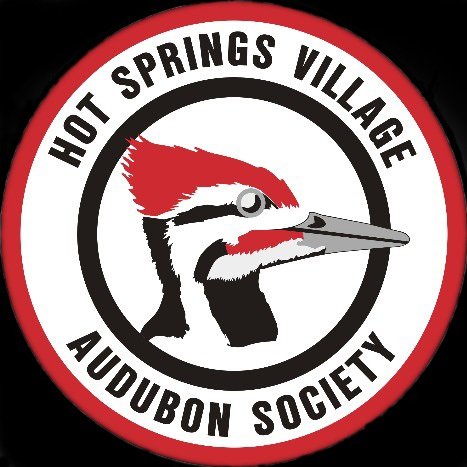Audubon members learn ‘Where the Birds Are’ in Arkansas
By MARY ELIADES
Voice correspondent
FIRST PUBLISHED IN THE FEB. 13, 2025, ISSUE OF THE HOT SPRINGS VILLAGE VOICE. REPRINTED WITH PERMISSION.
HSV Audubon members and guests were treated to a visual feast and a lively presentation by photographer Robert Holt at the Feb. 13 meeting of the club.
A full house filled the Coronado Center auditorium for the monthly program, and Holt began by explaining that he is not a birder. “I am a bird conservation photographer,” he said, and added that he focuses on “mostly larger birds,” especially those that are rare or endangered in Arkansas. He went on to praise Arkansas Game and Fish for its “incredible conservation efforts in Arkansas.”
Holt’s program was titled “Where the Birds Are,” and he proceeded to show beautiful photos of some of the little-known spots in Arkansas with thriving bird populations.
The journey began at Arkansas Post National Memorial, near Gillett, southeast of Pine Bluff. The bird species viewable here – for those who look closely enough – include egrets, kingfishers, pelicans, red-headed woodpeckers (which, according to Holt, are in decline), and great horned and barred owls (barred owls “have exploded here in Arkansas”). He added, “One of the largest eagle nests in Arkansas is here.”
It's not just birds that inhabit the wilds of Arkansas Post. “This is one of the largest areas for different snakes in Arkansas,” Holt said, along with baby gators (and their parents).
Holt emphasized again and again that to capture extraordinary photos of these birds that are rarely seen in Arkansas requires patience. The key is finding a good spot, by observing habitats, setting up early, and waiting – sometimes for hours or even days – for that perfect shot.
The next stop was Overflow National Wildlife Refuge, in the southeast corner of Arkansas. The refuge is next to an 11,000-acre private bird sanctuary, and many of the birds venture next door to the refuge to feed. Holt photographed dozens of species of birds: white-faced ibis, least bitterns, roseate spoonbills, tricolored herons, “thousands of anhingas, blue and green herons,” black-necked stilts, and snowy egrets “everywhere.”
“This particular sanctuary is supplying Arkansas with so many cool birds,” enthused Holt, with the beautiful tricolored herons nesting and fledging at the sanctuary.
It was on to the Bois d’Arc Wildlife Management Area, near Hope, Arkansas, where the black-crowned night herons “have exploded,” said Holt. “Kidd Landing is a good place for photos,” but “please watch for the alligators!” And it’s not only gators to watch for: Holt described being attacked by a hog and recommended taking bear spray along to deal with the wild animals.
Many species of birds reside here, including woodcocks, purple and common gallinules, kingfishers, “great blue herons everywhere,” and wood storks, which are still endangered but have increased in numbers.
Holt has spent five years studying and photographing limpkins and had stunning photographs of these rare birds.
Holt moved on to Bald Knob Wildlife Refuge, in White County, which has an abundance of species, including tricolored herons, snipe, dowitchers – “lots of wading birds.” The birds are not always easy to find. “You need to hook up with someone who knows where they are.”
Holt is especially proud of a photo he took of a king rail at Bald Knob, the first photo of the bird since 1980. King rail numbers have “severely declined,” but Arkansas Game and Fish is diligently working to bring them back.
Holt briefly touched on birds at Bell Slough Wildlife Management Area (painted buntings and yellow-crowned herons – “everywhere”) and then moved farther afield, with wonderful photos of sandhill and whooping cranes at the Wheeler Wildlife Refuge in Alabama, and the white morph (or reddish) egrets, least grebes, and more whooping cranes at Port Aransas, Texas.
Holt ended his presentation by handing out raffle prizes, including walking sticks, studio lights, camera backpacks, plant watering globes, insulated gloves and camo masks, and a solar panel to use out in the field.

